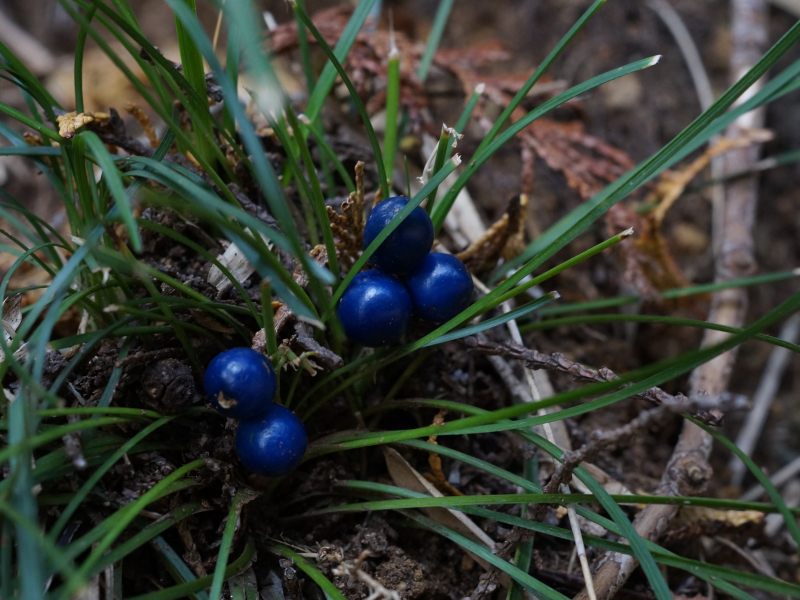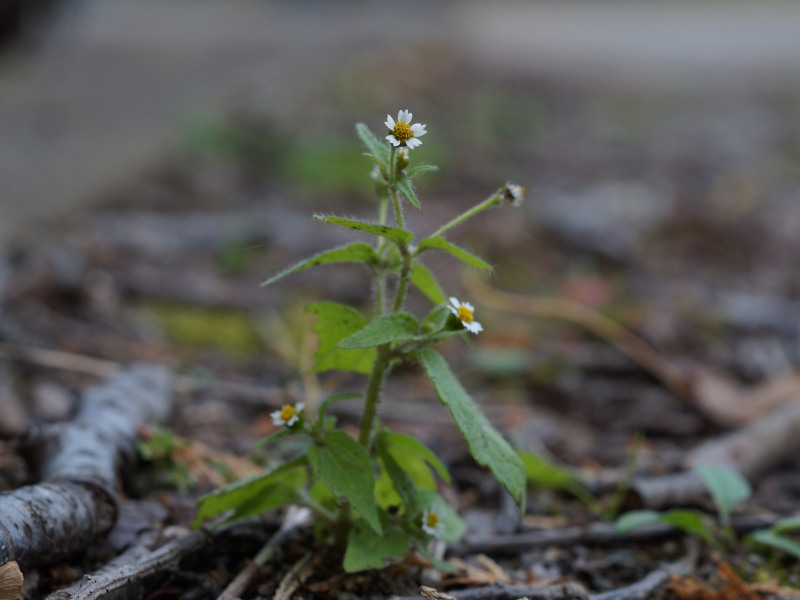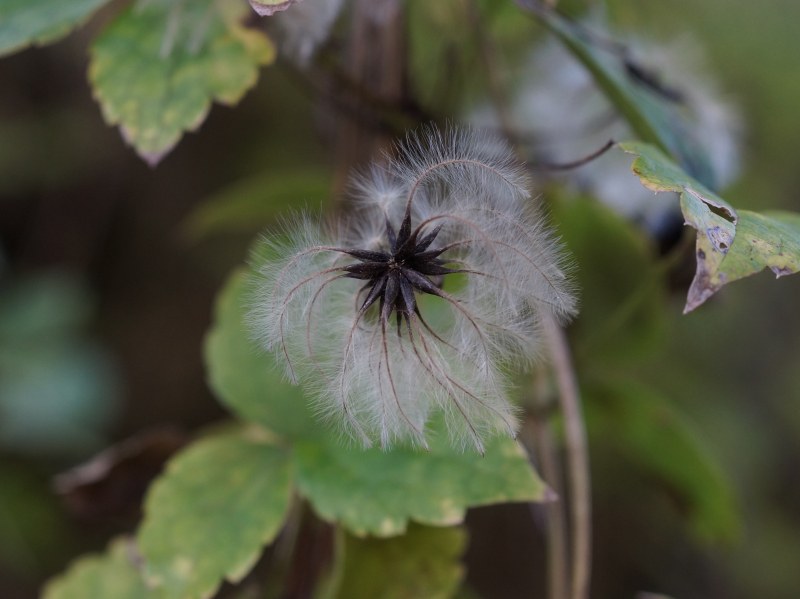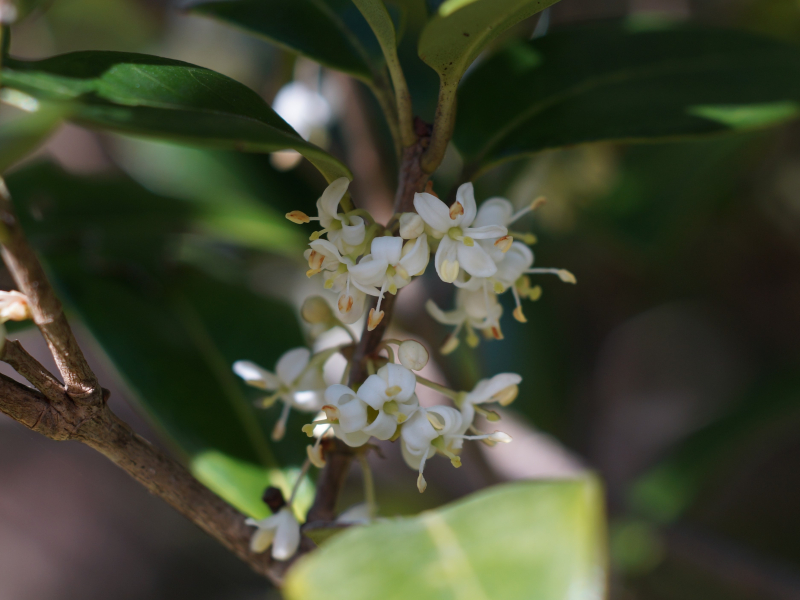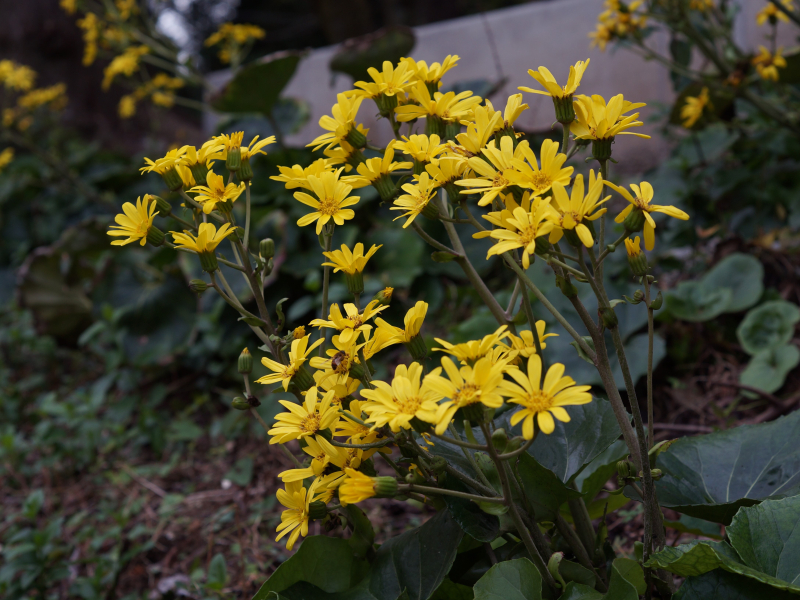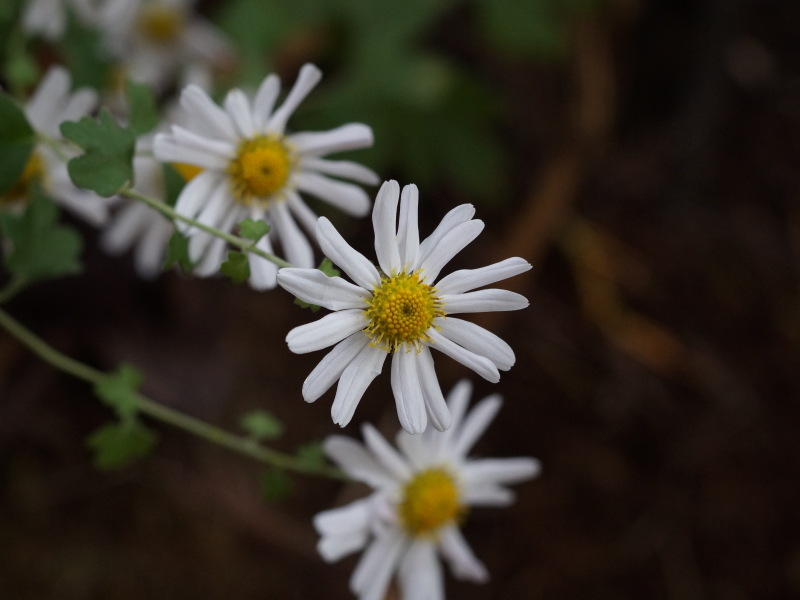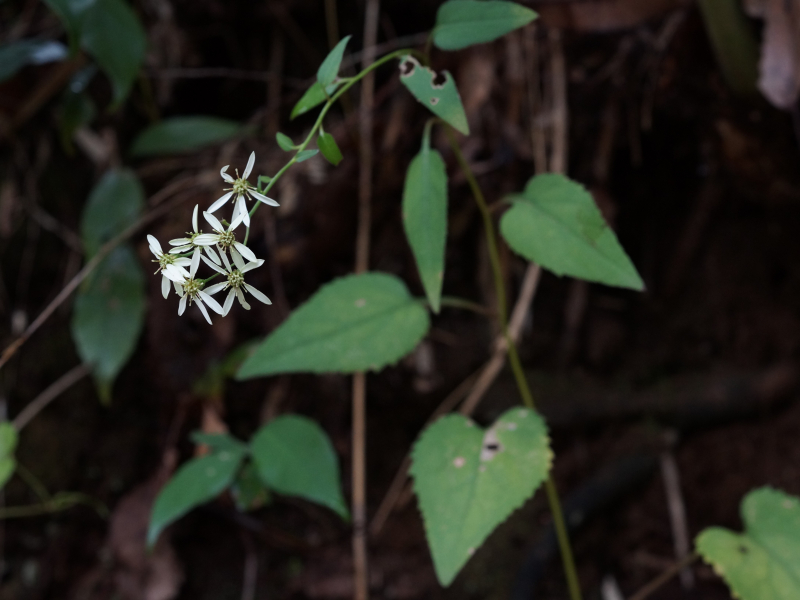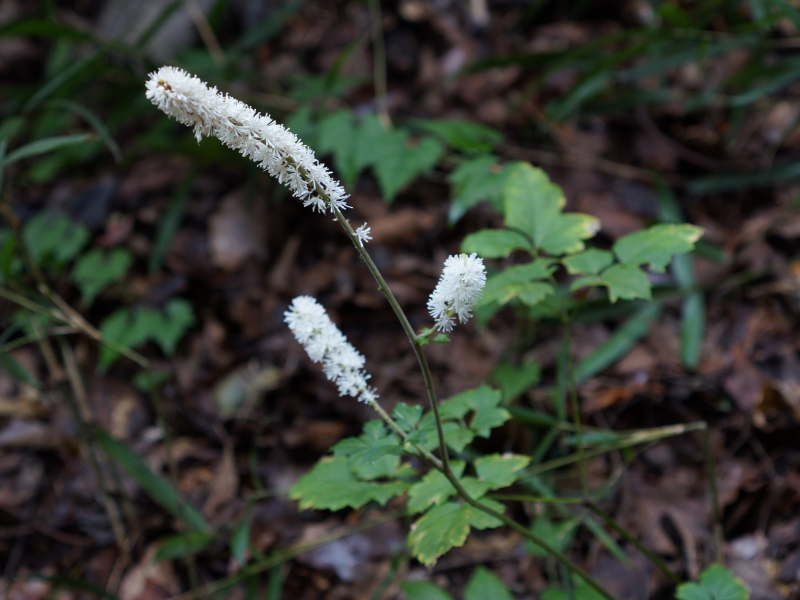フィールド日記
2023.12.15
ジャノヒゲ
ジャノヒゲが種子をつけています。細い葉に隠れて、あまり目立ちませんが、きれいな瑠璃色の種子です。果実のように見えますが、果皮は早い段階で失われ、種子がむき出しになっています。
"Janohige (ジャノヒゲ)" plants are bearing their seeds. Their seeds are very beautiful ultramarine blue, though, in this picture, they don’t stand out very much behind narrow leaves. The seeds look like fruit, but their fruit skin disappears in the early stage of their growth, followed by the explosion of the seeds.
2023.12.12
アズマイバラ
アズマイバラが果実をつけています。低山や丘陵によく見られる野生のバラの一種です。学院では、聖心橋を過ぎたあたりの斜面に見られます。花は5月から6月に咲きます。
"Azuma-Ibara (アズマイバラ)" plants are bearing their fruits. They are a wild rose growing in low mountains and hills. On our campus, you can see them on the slopes after passing the Seishin bridge. They bloom from May to June.
2023.12.08
ハキダメギク
ハキダメギクが咲いています。世界に広く分布しており、日本には大正時代に入ってきたと言われています。和名のハキダメは掃き溜めのことで、ゴミ捨て場を意味しますが、畑や道端など、さまざまな場所で見ることができます。
"Hakidame-Giku (ハキダメギク)" plants are in bloom. They grow widely in the world and came to Japan in the Taisho Era. "Hakidame" literally means "garbage dump." However, they are seen in various places such as fields and road sides.
2023.12.05
ハンショウヅル
ハンショウヅルが果実をつけています。野生のクレマチスの仲間です。他の仲間と同様に、花の後は雌しべの花柱が伸び、その毛も伸びて羽毛状になります。
"Hanshou-Zuru (ハンショウヅル)" plants are bearing their fruit. They are wild clematis. Like other relatives, after flowering, the styles of their pistils grow and the hair on the styles also grows like feathers.
2023.12.01
ヒイラギ
ヒイラギが咲いています。葉の付け根に良い香りのする小さい白い花が集まって咲きます。ヒイラギは、葉にトゲがあるイメージがありますが、トゲがあるのは若いときだけで、成木になるとトゲがなくなります。
"Hiiragi (ヒイラギ)" trees are in bloom. Small fragrant white flowers bloom gathering on their leaf axils. We have an image that "Hiiragi" trees have spiky leaves. However, only when they are young, they have spiky leaves. When the trees become an adult, they lose spikes on their leaves.
2023.11.28
ツワブキ
ツワブキが咲いています。海岸近くなどに自生するキク科の多年草です。古くから栽培されており、江戸時代から続く品種もあるようです。初冬に咲く花だけでなく、厚く光沢のある葉も鑑賞の対象とされています。
"Tsuwabuki (ツワブキ)i" plants are in bloom. They are perennial composite flowers that grow in coastal areas. They have been cultivated for a long time and some cultivars have lasted since the Edo era. People appreciate not only their flowers, which bloom in early winter, but also their thick shiny leaves.
2023.11.24
リュウノウギク
リュウノウギクが咲いています。野生のキクの仲間で、山地の斜面などによく見られます。和名は葉を揉むと、竜脳という香料のような香りがすることに由来します。
"Ryunou-Giku (リュウノウギク)" plants are in bloom. They are a wild Chrysanthemum and often seen on the slopes of mountains. The name comes from the fact that they smell like borneol, which is called "Ryunou" in Japanese, when you rub their leaves.
2023.11.21
アキノキリンソウ
アキノキリンソウが咲いています。ススキ野原や明るい林縁などに生えるキク科の多年草です。別名をアワダチソウといい、同じ仲間に北アメリカ原産のセイタカアワダチソウがありますが、本種は在来種です。
"Akino-Kirinsou (アキノキリンソウ)" plants are in bloom. They are perennial composite flowers that grow in the Japanese pampas grass field and on the sunny edges of forests. "Akino-Kirinsou" plants are a native plant, while they have another name "Awadachisou (アワダチソウ)" and have the relative plants called "Seitaka-Awadachisou (セイタカアワダチソウ), which comes from the North America.
2023.11.17
シラヤマギク
シラヤマギクが咲いています。和名は、山に生える白い菊という特徴がそのまま由来となっています。秋にはキャンパス内に数種類の野生の菊が見られますが、本種は下部の葉が三角形(心形)であること、花びらのように見える舌状花が少なくすき間があいていることなどの特徴があります。
"Shira-Yama-Giku (シラヤマギク)" plants are in bloom. The name comes from the fact that they are a white composite flower that grows in mountains. You can see several wild composite flowers on campus. This species has some characteristics: The plant has triangle-shaped leaves on the lower part of its stem and it has less ligulate flowers, which look like petals.
2023.11.14
サラシナショウマ
サラシナショウマが咲いています。和名は、若芽を食用にするときに、水にさらしてアクを抜くことに由来します。また、根を乾燥させたものを升麻(ショウマ)といい、生薬として利用されています。
"Sarashina-Shouma (サラシナショウマ)" plants are in bloom. The name comes from the fact that when we eat their young leaves, we put the leaves in the water to remove harshness. Their dried roots are used as herbal medicine.


